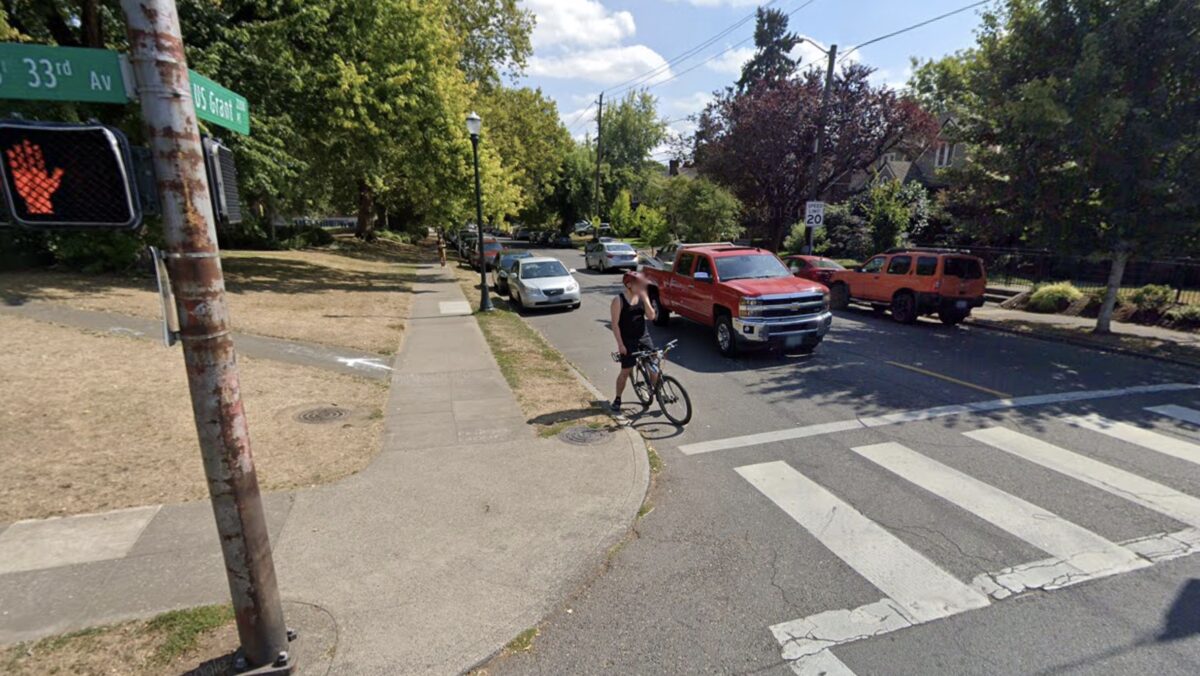
A key section of one of Portland’s oldest neighborhood greenways needs some help.
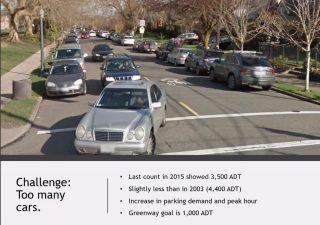
Northeast Tillamook was established as a “bike boulevard” (a precursor to neighborhood greenways) to parallel NE Broadway in 1999. The idea was to create a low-stress, east-west, family-friendly cycling link between north and northeast Portland. PBOT updated the western section between North Flint and NE 28th in 2019, but the section east of that hasn’t gotten any significant attention for two decades.
From the busy crossing of US Grant Place and NE 33rd, to 43rd and Sandy — the route is beset with so many challenges that PBOT thinks it might be time to redirect bike users one block south to NE Hancock.
At the February meeting of the PBOT Bicycle Advisory Committee (BAC), neighborhood greenway program leader Scott Cohen laid out the situation and asked committee members for feedback.
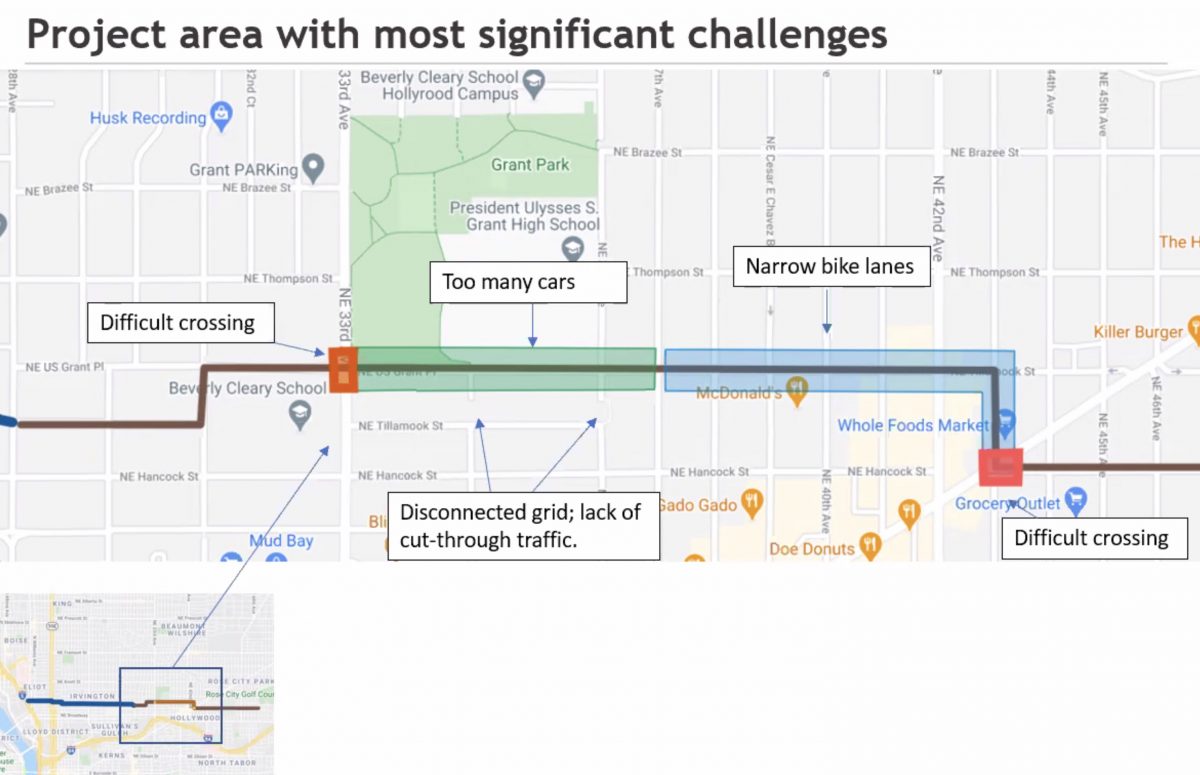
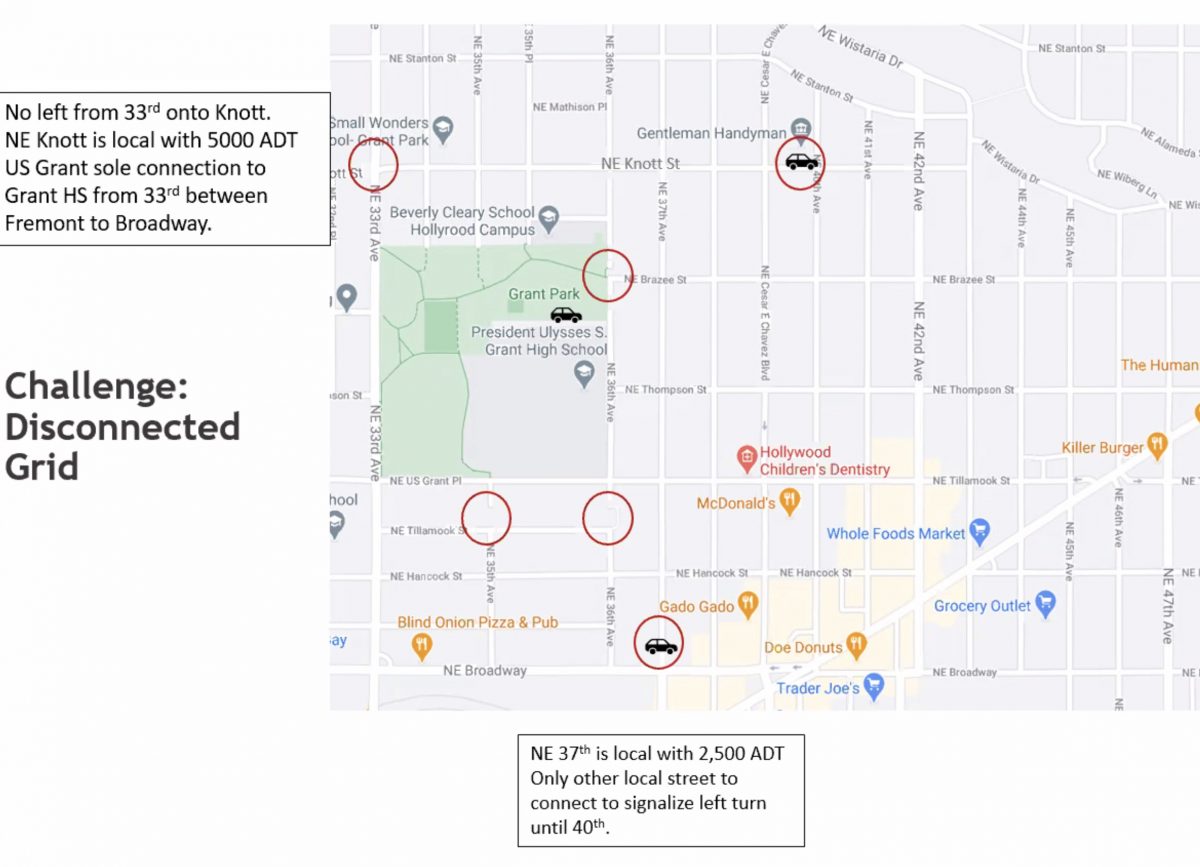
The problems begin at the crossing of Grant Place and 33rd where PBOT says there are simply “too many cars”. PBOT’s target for greenways is 1,000 cars per day. The section of Tillamook between 33rd and 37th has about 3,500. The street also has parking on both sides and is adjacent to a popular park (Grant Park) and large public high school (Grant High). Typically PBOT would consider traffic diversion in a situation like this, but since there are major destinations on Grant Place and the nearby street network is disconnected, it would be “complicated”.
Grant Place is also the only street between Stanton and Broadway (8 blocks or about 0.6 miles) where left turns off 33rd are allowed. This not only increases driving volumes on Grant Place, it means if PBOT installs diverters or prohibits left turns, more drivers are likely to use NE Knott to get into the Hollywood District. Since Knott is classified as a Local Service Traffic Street and already has about 4-5,000 cars per day (according to Cohen), intentionally putting more cars on it is considered a non-starter. “In an ideal world NE Knott not would be a [neighborhood] collector street (a higher classification that would allow PBOT to direct more cars to it),” Cohen said at the meeting, “But don’t tell that to people who live on NE Knott.”
Advertisement
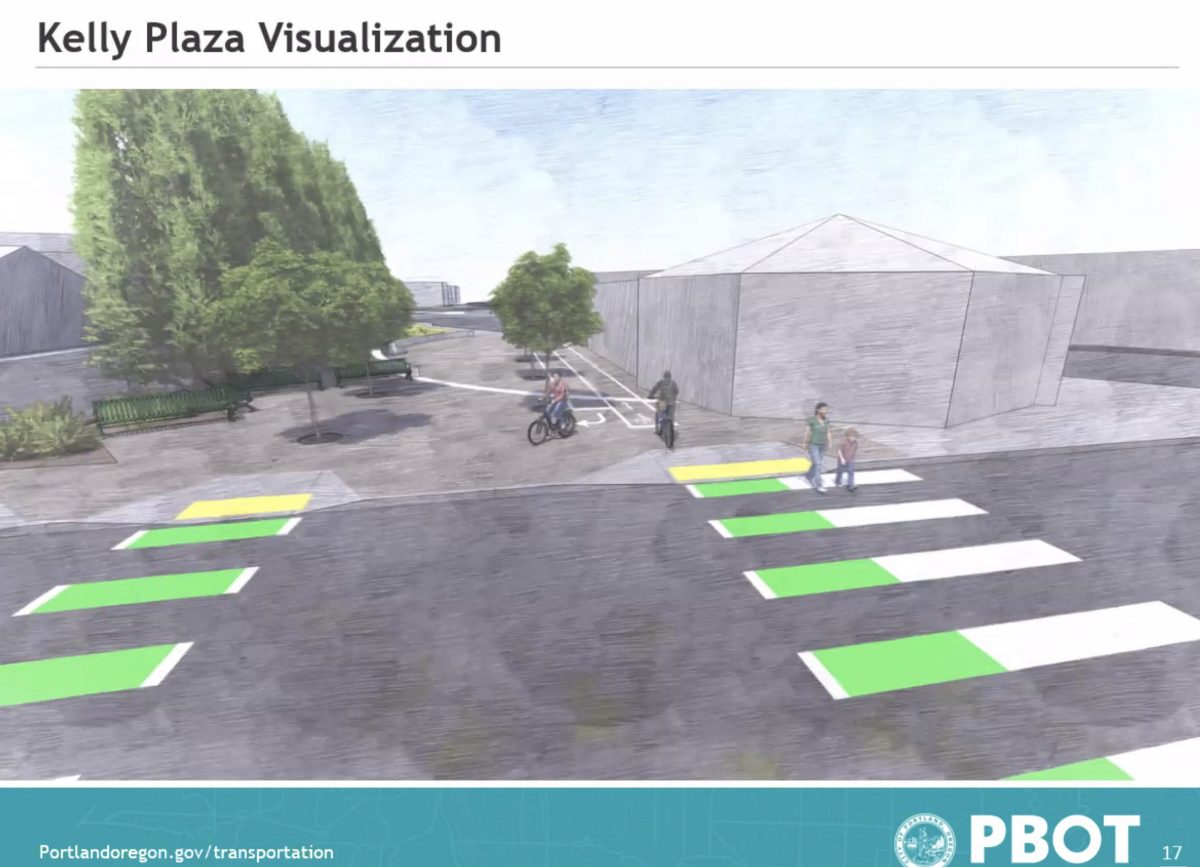
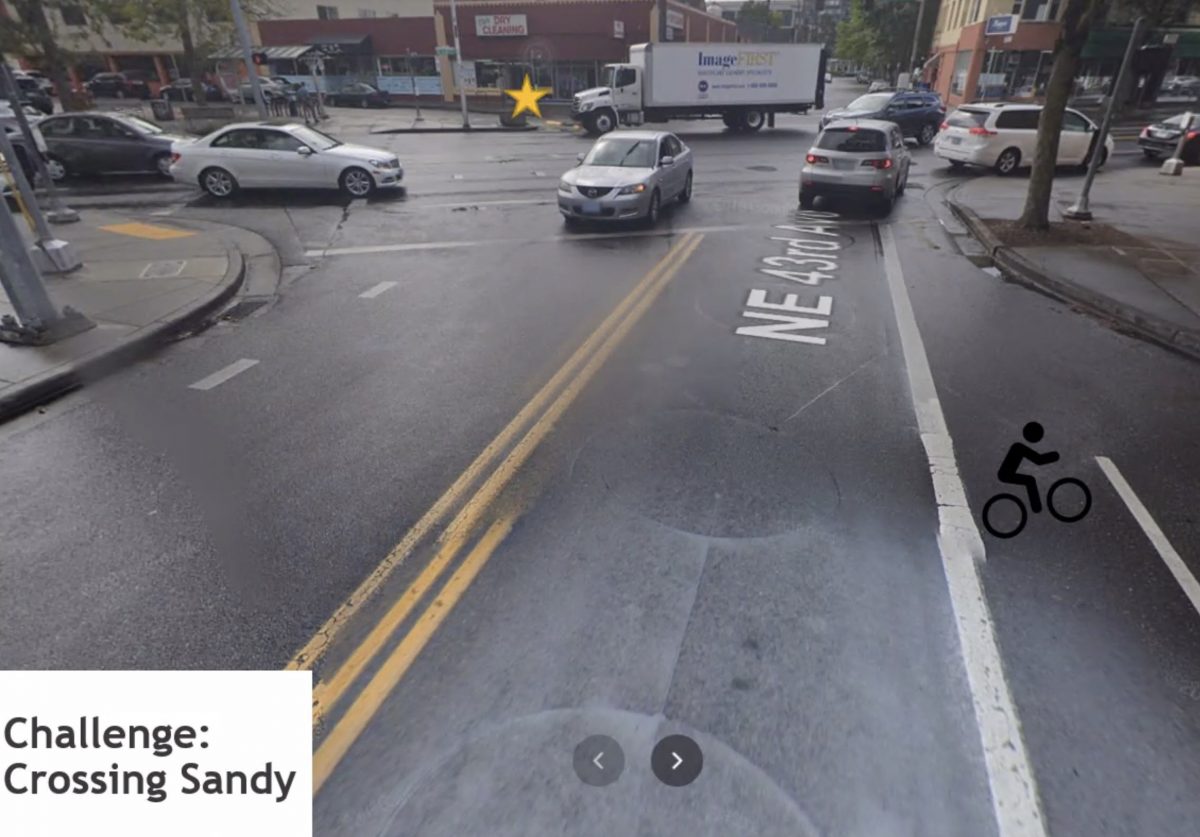
Once riders survive the crossing at NE 33rd and car-centric blocks next to the park and high school, they’re faced with another challenge: very narrow door-zone bike lanes on Tillamook between 37th and 43rd. Despite their substandard width, these bike lanes are popular because they provide direct access to a public library, Whole Foods, and several other destinations.
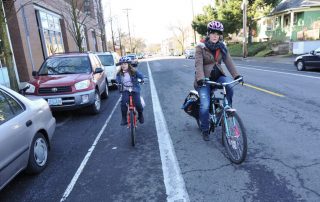
(Photo: Jonathan Maus/BikePortland)
Other challenges Cohen shared at the meeting include the crossing of NE 43rd and Sandy and the fact that Tillamook through the Hollywood District is a secondary emergency response route.
One of the options on the table to tame this “really tricky route” (according to Cohen) is to just give up on Grant Place for now and direct riders one block south to NE Hancock. This would act as a “bridge” until PBOT could take a “more holistic look at the neighborhood… including the challenges on Grant Place,” Cohen said.
A major advantage of using Hancock as the greenway is that it has much less traffic. It also connects directly to a K-8 school. Nearby streets also have a stronger grid, so PBOT could use traffic calming and diversion if necessary. PBOT also likes the potential of Hancock because it might allow for an easier cycling connection across Sandy via Kelly Plaza (see illustration).
Cohen promised that if PBOT decided to reroute the greenway to Hancock, it wouldn’t preclude them from making changes on Grant Place in the future.
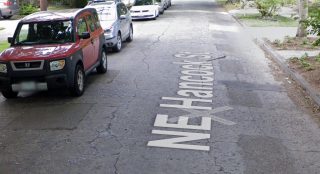
But some BAC members were skeptical of using Hancock. The pavement condition is very bad and it would likely need to be repaved (which would be expensive and not likely to happen for years). Taking the bike route away from Grant Place would also mean losing a safe connection to key destinations like Grant Park, Grant High, the library and so on.
BAC member Catie Gould told Cohen that, “Even if we do provide a parallel, lower-stress route on Hancock, I want to make sure that people can still access those destinations [on Tillamook] safely.”
BAC member Iain MacKenzie said he’s made a wrong turn while using the Grant Place section of the greenway and accidentally ended up on Hancock. “To say that the pavement surface isn’t that good is a real understatement,” he shared with Cohen. “It’s just horrible to ride on.” Instead of giving up on Grant Place, MacKenzie suggested removing parking and providing bike lanes between 33rd and 37th. Cohen replied that since the street is too narrow to include a bike lane and on-street car parking, that would require removing 100% of the parking spaces (and it’s just assumed this would be a non-starter).
Another committee member, Clint Culpepper, said he prefers Hancock while biking with this kids because Grant Place is too dangerous. Culpepper added that he feels PBOT missed an opportunity to preserve Tillamook as a bike-friendly street years ago, before it became overrun with drivers. “I feel like this is an example of a neighborhood greenway that was successful but we didn’t take advantage of it when it was successful to put in proper traffic diversion, and now we’re left with a situation where so many people are using it and there are no great solutions,” he said.
Cohen disagreed. He said car use on Tillamook has actually gone down since the greenway was established in the 1990s. “I don’t think this is a place where we didn’t capture those low volumes and then traffic grew,” Cohen replied. “This is just a product of our standards changing. We want neighborhood greenways to to behave a lot differently than we used to and so this is a place where we’re having trouble with older facilities meeting our new, better standards — standards which I totally support, but which make things like this hard.”
—
If you use this route and want to share ideas or input with Cohen and his team at PBOT, drop him a line at scott.cohen[at]portlandoregon.gov.
— Jonathan Maus: (503) 706-8804, @jonathan_maus on Twitter and jonathan@bikeportland.org
— Get our headlines delivered to your inbox.
— Support this independent community media outlet with a one-time contribution or monthly subscription.

